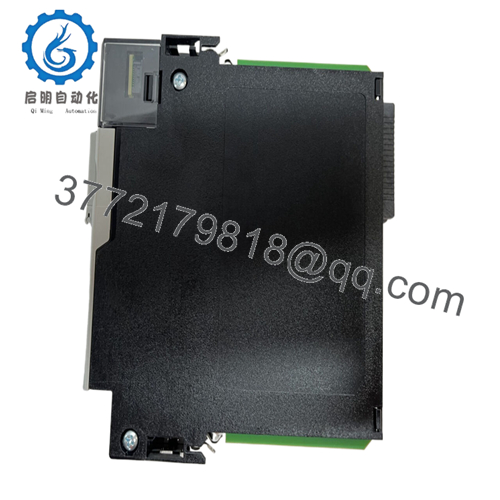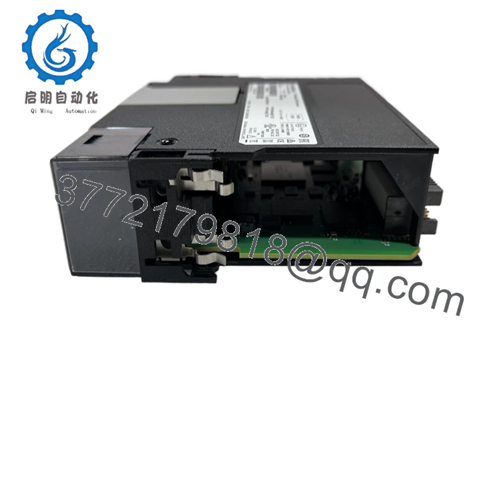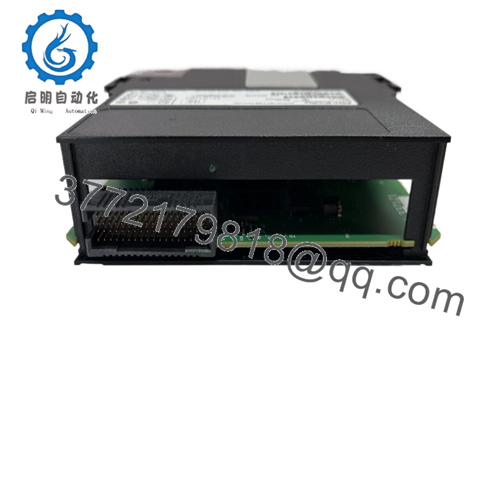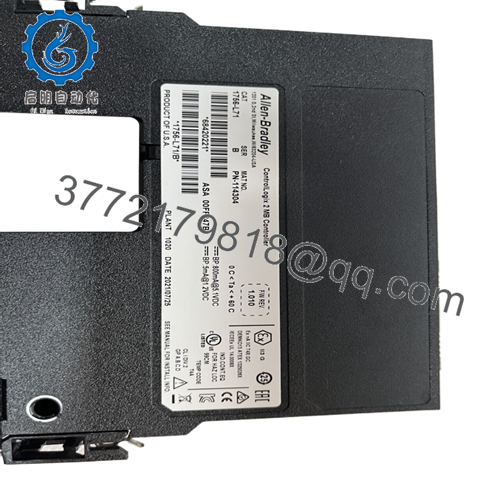Description
Real-World Use & Application Scenarios
The Allen-Bradley 1756-L71 controller is widely used in industries such as automotive manufacturing, food and beverage, oil and gas, pharmaceuticals, and water treatment where mid-level control systems require reliable, real-time process and discrete control. This controller supports complex machine control, batch processing, and highly coordinated motion control applications, helping operators meet stringent production quality and safety requirements.
Its ability to handle large I/O combinations and vast networking capabilities supports distributed control architectures, offering flexibility to expand systems as operational needs grow. Challenges such as ensuring uptime in critical processes and managing high-speed logic execution are addressed through its redundancy support, multiple communication ports, and advanced memory management.

- 1756-L71

- 1756-L71
Product Introduction & Positioning
The 1756-L71 is a ControlLogix programmable automation controller module with 2 MB of user memory and 0.98 MB of I/O memory. It includes onboard USB and supports a wide array of communication adapters, including EtherNet/IP, ControlNet, DeviceNet, and various third-party protocols, making it highly integrable into heterogeneous automation networks.
Engineers choose the 1756-L71 for its balance of power and efficiency, suitable for medium complexity applications offering up to 128,000 digital and 4,000 analog I/O channel support. The controller supports up to 100 programs per task and 32 concurrent tasks, facilitating modular and organized programming architectures. Its compatibility with Studio 5000 software enhances programming, diagnostics, and system visualization.
Key Technical Features & Functional Benefits
The 1756-L71 supports multiple communication ports with high data throughput, including a USB 2.0 port for programming and diagnostics without interrupting system operation. Network resiliency is enhanced by supporting redundant communication adapters, which reduce single points of failure. The controller has built-in energy storage modules (capacitors) that store the program and data instantly during power loss, protecting against data corruption.
With operating temperatures from 0 to 60°C and a low power dissipation footprint of 2.5 watts, the 1756-L71 module fits efficiently into industrial environments. Its integrated diagnostics provide detailed system status for proactive maintenance, while the open enclosure design allows easy integration into ControlLogix chassis.
Detailed Technical Specifications
| Parameter | Value |
|---|---|
| Model | 1756-L71 |
| Brand | Allen-Bradley |
| Product Type | ControlLogix Programmable Automation Controller |
| User Memory | 2 MB |
| I/O Memory | 0.98 MB |
| Communication Ports | 1 USB 2.0, supports EtherNet/IP, ControlNet, DeviceNet, and third-party |
| Max Digital I/O | 128,000 |
| Max Analog I/O | 4,000 |
| Programming | Supports 32 tasks; up to 100 programs per task |
| Operating Temperature | 0 to 60 °C |
| Power Dissipation | 2.5 Watts |
| Enclosure | Open-style |
| Weight | Approx. 0.35 kg (0.78 lb) |
Related Modules or Compatible Units
Allen-Bradley 1756-L72 – Similar to L71 with slightly higher user memory capacity (4 MB).
Allen-Bradley 1756-RM2 – Redundancy module enabling controller redundancy with ControlLogix platforms.
Allen-Bradley 1756-PA75 – Power supply module compatible with ControlLogix chassis.
Allen-Bradley 1756-EN2T – EtherNet/IP communication module.
Allen-Bradley 1756-ESMCAP – Capacitor energy storage module providing power backup.
Installation Notes & Maintenance Best Practices
The 1756-L71 should be installed in a ControlLogix chassis with proper ventilation and protection from extreme temperatures. Power supply and grounding must comply with Rockwell Automation guidelines to ensure noise-free operation. Use shielded cables for communication ports to maintain signal integrity.
Maintenance includes routine monitoring via Studio 5000 to check diagnostics and system status. Firmware updates are recommended to improve functionality and security. Periodic physical inspection of cooling pathways and connection points supports long-term reliability. Backup controller programs regularly and verify capacitor functionality to safeguard data during power interruptions.



 WhatsApp: +86 16626708626
WhatsApp: +86 16626708626 Email:
Email:  Phone: +86 16626708626
Phone: +86 16626708626


